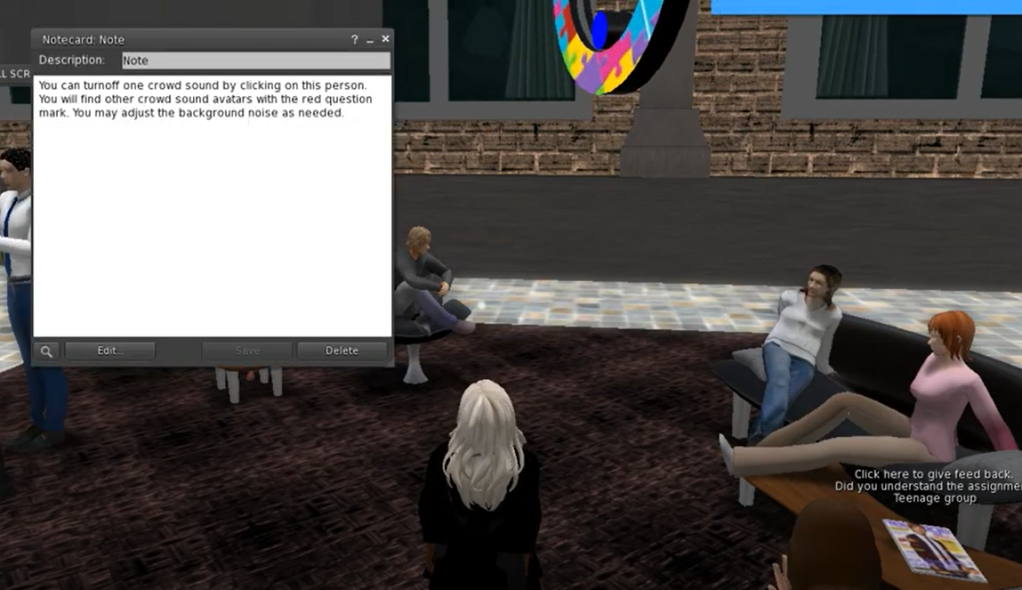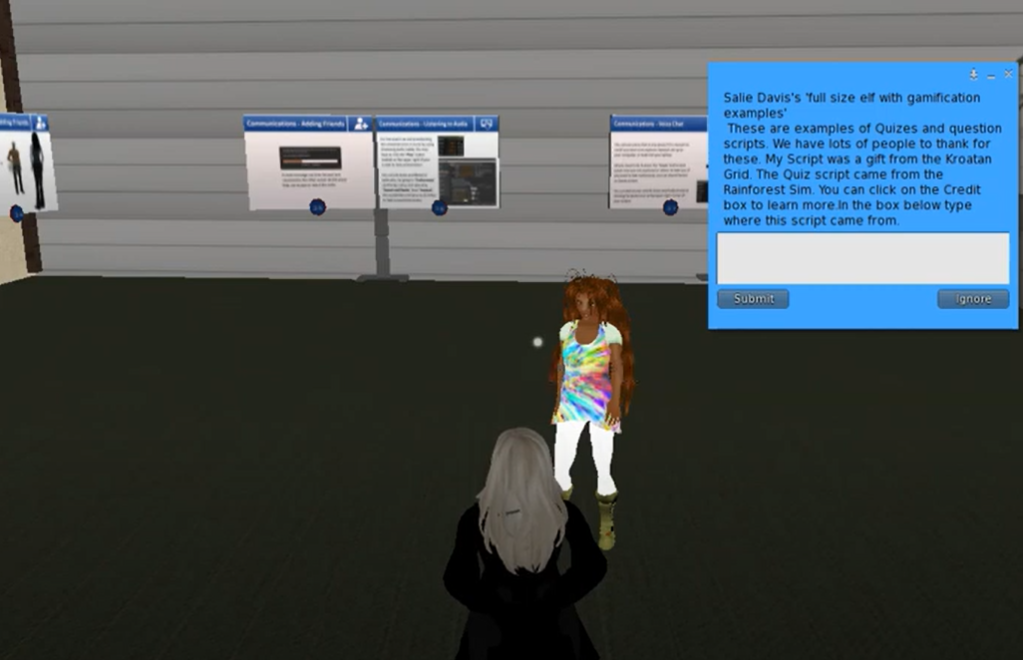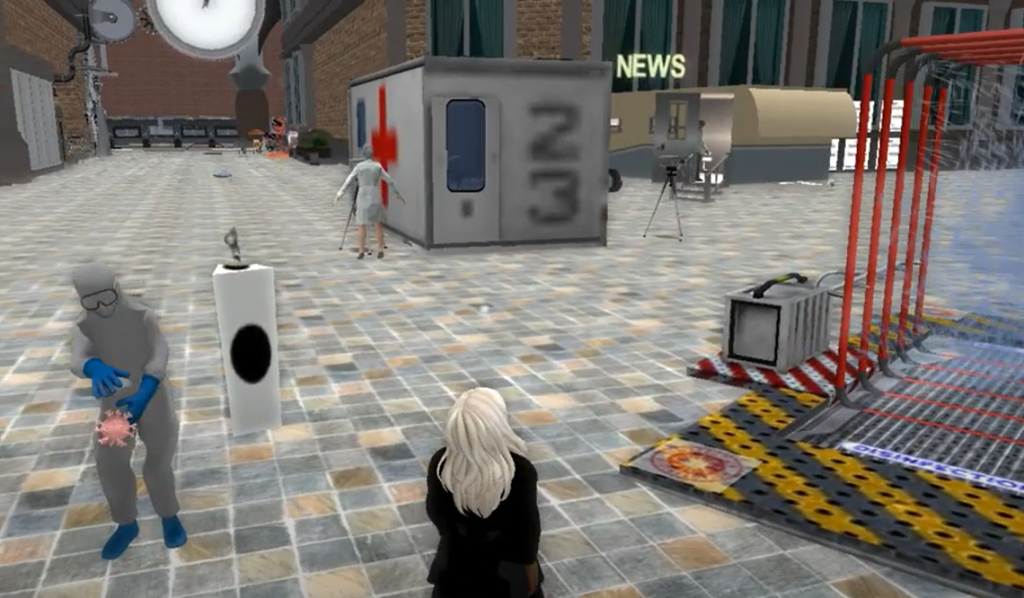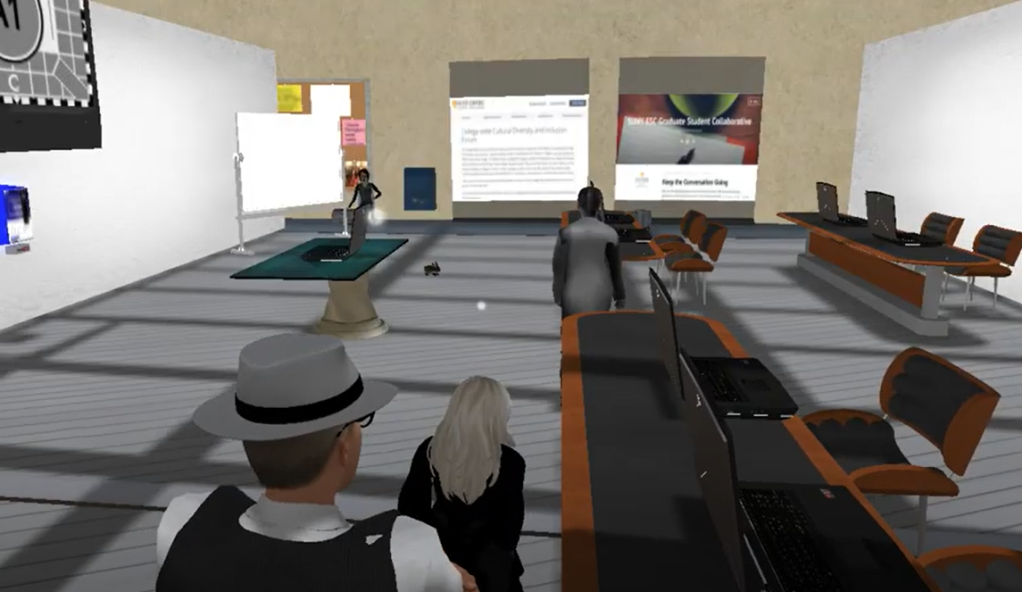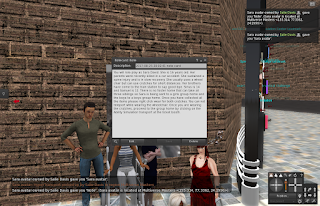I have been to so many meetings lately where the buzzword is Metaverse. It's new and it's here now! It's immersive! It's the future! Well yes, I agree that the Metaverse is the future, and it is immersive but new... Um... no and everyone touting that it is here now, No. Just no. "Oh, Wait, " you say, "they're experts! they have been exploring the metaverse for years!" Again, No.
The first thing you have to understand here is that no one, No One is an expert on the Metaverse. The Metaverse is a hypothetical counterpart to the internet where we all can participate in an immersive virtual space with limitless bounds and physical spaces... think Matrix. Technology is changing rapidly. What we have now is the Multiverse and it is NOT new. A Multiverse is an immersive virtual world such as OpenSimulator, an open-source server platform originally launched in 2007 for hosting virtual worlds and metaverse-like environments in opposition to Second Life created in 2003.
I have been a researcher in these environments since 2016. Exploring the pros and cons of different platforms, benefits, risks, cost analysis, effectiveness, social and ethical considerations, and cross-generational uses and I have been building case study examples of personal, professional, business, and educational models.
With degrees in creative marking, media communications, and teaching and learning in emerging technologies, I have worked for a global leader in the BPO industry for over 11 years working virtually in customer service, training, technical support, operations management, and recruiting. Prior experience included designing and implementing curricula for students that focused on technology and virtual resources.
Currently, my involvement in virtual worlds is primarily to support the open-source community through the creation of content and offering knowledge-based support. I speak regularly at in-world events and other venues introducing people to the benefits and opportunities within virtual worlds. I create support videos and maintain several websites and blogs that highlight my in-world experiences.
I will be presenting at the OSCC22 this year on Virtual-World uses and examples in the Multiverse and Metaverse for BPO and corporate applications. It will be an overview of business process outsourcing (BPO) uses in virtual worlds, showing examples from the multiverse and upcoming metaverse. Companies not prepared will lose out on prime opportunities. All stakeholders in corporate entities, customers, employees, and investors, involved in the future of immersive technologies such as the metaverse would benefit from this overview.
Examples will discuss customer experience, shopping, and virtual support, talent acquisition such as job fairs, virtual employment, distance training, team development, and more. We are quickly approaching a time when technology and demand will fuse to create quality human interactions in the multiverse. Companies need concrete examples of what is currently available. OpenSim and the multiverse are essential parts of any company’s business strategy if they want to be first movers in the metaverse.
A lot of it has to do with human learning in the desire to connect something new with something familiar and human nature in the willingness to adapt to new technologies. I have been an active researcher and developer in the Multiverse since 2016. During most of this time, I was learning about the long-term struggles of scholars, and developers trying to encourage the general adoption of this emerging technology. After researching all of the available platforms for virtual reality in 2016, I decided to focus the majority of my development and content creation on the Kitely Grid. Kitely was founded in 2008 and now hosts over 15,000 virtual worlds.
The need to learn the platforms in order to enter the various virtual worlds, such as open simulator viewers, firestorm being the current leader, has been one of those barriers to widespread adoption. Having to pay for and download the platforms for Roblox and Minecraft, or other MMO's has also been a barrier for non-gamers. Some MMO's and RPGs have been free, and others carry a price tag. I alone have purchased Minecraft for tablets, PC, bedrock, and Java... and almost bought it for the Nintendo system just a few weeks ago! We purchased an iPad so we could use Minecraft Earth only to learn it was being discontinued, so only got to use it for one month.
Virtual world technology requires investment, if not in money, in time and energy learning, first the platforms, then, if you are interested in being a developer or content creator, which would be required to customize the environment for business purposes, you need to learn the scripting languages and build tools required.
Most people want to enter a virtual world, move within it intuitively, enjoy the experience, accomplish their goals, and be able to leave with as little effort as possible. Over 50 percent of people, when asked about the virtual environment say they want to explore new places, research health care options, go to training and learn in virtual environments, and communicate with customer service agents in virtual worlds.
The question is, why do they want it now and not 14 years ago when the technology was sitting, just waiting for them? The answer lies not in the platforms designed for adult interactions like Opensim, it lies in those designed for our youth. Minecraft, Roblox, Club Penguin, ABC mouse, and more. The current generation entering society as consumers and workers have played in virtual worlds, they have learned in virtual worlds, and they now want to work in virtual worlds and interact with businesses in the virtual world. They are ready. Will your business be?
In order to be competitive, companies need to understand the business applications and uses of virtual worlds in the multiverse and how this will expand into business applications in the metaverse. One example of business applications is business process outsourcing. Not every business can be an expert in these emerging technologies so those companies that are the leaders now will be in control of the resources needed by others to stay competitive.
When exploring the multiverse companies need to look for platforms that will give them measurable examples with proven uses and easy-to-implement opportunities in the multiverse. OpenSim is one of the veteran platforms able to accommodate these requirements.
Companies need to focus on what currently exists as options and verifiable uses, rather than what might be developed in the future. They can compare what exists in current structures to see how closely they reflect the common business process life cycle for creating and maintaining a brand identity, social media identity, and networking at the customer level.
What platforms are in a position to provide current customer support options such as sales and live virtual agents in-world? Another business process uses companies need to consider is talent acquisitions, from job fairs to interviews, to employee training. This paves the way for virtual employment and virtual or global team support and team building. When a company has assembled a list of current verifiable uses that could be implemented now in trial runs, this will help them prepare for the eventual high demand for business process outsourcing in the coming metaverse.
If you are involved in corporate planning and development, you need to be looking for ways to ease into technology for trial applications in the coming metaverse. Opensim and the multiverse will help you maintain your competitive edge for the coming metaverse. In order to be successful in your research, you need to cut through the marketing hype to help your corporation set achievable goals towards integrating into the metaverse. Opensim is a viable option to help companies prepare their metaverse strategy plans for business applications.
Open simulation is a low-cost low-risk alternative allowing for compatibility with other technologies. Companies are able to maintain ownership over corporate assets, and Opensim allows flexibility to move to other platforms, security protocols currently exist and have been highly refined in current Opensim offerings such as Kitely.com. Content development is cross-functional with commonly used tools such as SketchUp, Blender, Unity, Make Human, C# programing, and more. Product development has been part of the platform since its beginning over a decade ago. Market testing and research already exist and are well documented, with measurable performance goals, and metrics already built in. The customer experience from entry to product/service interaction has already been explored by current users, sales, and follow-up support strategies have already been developed. OpenSim and the multiverse are essential parts of any company’s business strategy if they want to be the first movers in the metaverse.
Let's recap:
What do companies need to consider when comparing multiverse platforms? Compatibility with other technologies, ownership of assets, flexibility to move to other platforms, security protocols and content development, product development, market testing, measurable performance goals, and metrics are essentials. Companies must research the customer experience from entry to product/service interaction, sales, and follow-up support strategies. talent acquisition, virtual job fairs, recruiting, interviews, training team support, and team building. Look for current examples and not promised developments.
The metaverse goal will be to replicate the physical world into a virtual likeness with the added benefits of virtual creativity not achievable in the real world.
The multiverse is now. The metaverse is what will be.
Prepare for the metaverse by exploring and experimenting with the multiverse. Transfer all this knowledge and your virtual world designs into the metaverse options as they emerge. It is not enough for a business to have a digital presence. To be successful corporations must create a virtual presence. Companies need to start NOW, in order to prepare for the coming metaverse.





























